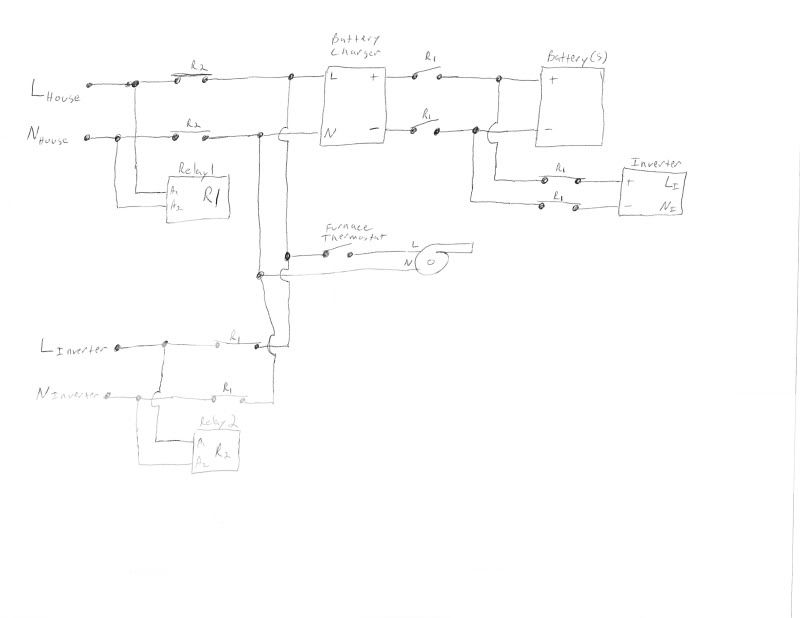Finally, thanks for someone actually addressing the question. Obviously a generator would be a better option IF I new that I was going to be home to start it. The problem is that I have a wood burning furnace, and in the winter I normally run it 24/7 all week long. I leave for work around 7 and get home around 6:30. Wife leaves for the sitter around 1 and gets home round 3 AM. So there's a 5~6 hour period where there's no one here to start a generator, and she adds wood before she leaves to make sure that I have something to work with when I get home. Normally if the power goes out, I just go down and close the damper on the forced draft blower. During the day, I normally don't have it open very far anyway, and it can sit there and burn with no power for hours on end with no problem. The problem for me is that my wife doesn't understand this. So, if I can develop a reliable solution for under $200, it's worth it for her peace of mind.
Now back to my original question.
Whitespider - you got me. Transformer wasn't the right choice of words. I was thinking of the inverters that you can get about anywhere. I know that I need to see what the amp draw is for my blower, but I wasn't at home at the time and couldn't go down to check it. I've since checked it and the motor has a 2.8 amp rating. I'm not terribly worried about start up time. If the battery has to go straight into use immediately, then the blower is already running and should be trying to draw a pretty small load. The thermostat on the furnace will still be part of the system, so having an hour of continuous run time available is actually going to be capable of providing a lot more run time that what I'm calculating. TSC has a 120 AHr deep cycle marine battery for $80. I have a pair of 120V motor starters out of an electrical cabinet that I can use for relays. I just need to get some wire, a battery charger/maintainer, an inverter, and a small electrical enclosure to mount the wiring and relays in.
Here's a rough diagram of what I'm thinking.
One of the relays (R1) would be controlled by the house voltage. The other (R2) would be controlled by the voltage supplied by the inverter.
Under normal conditions the house power would run through a set of normally closed contacts on R2, and supply power to a battery charger and the furnace blower. A set of normally closed contacts on R1 (which would be open at this point) would prevent the house power from being run back to the inverter.
From the battery charger, the DC lines would run through a set of normally open contacts on R1 (which are now closed) allowing the battery to be charged/maintained. The power would then branch off and run to another set of normally closed contacts on R1 (which are now open) preventing the batteries from supplying power to the inverter.
When the power goes out, the R1 contacts after the battery charger would open, disconnecting the battery charger from the battery(s). The R1 contacts between the battery and inverter would close, supplying power to the inverter. The inverter would supply power to Relay 2 which would open the R2 contacts and prevent the inverter from feeding back into the house. The R1 normally closed contacts are now closed again allowing the Inverter to supply power to the blower.
This circuit should allow for the system to shut back off when the power comes back on, and could be modified slightly to work with a generator as well.






